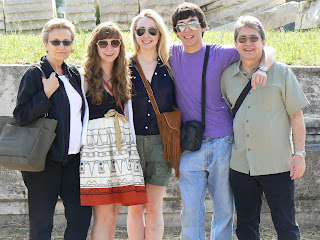



After Sardis, we traveled to Izmir for the night. This morning, we traveled north to the ancient site of Pergamum. We visited the acropolis where we viewed, among other things, the temple of the emperor Trajan and the remarkable theater. Afterwards, we descended from the acropolis and explored the sanctuary of Asclepius, the god of healing.
We then drove to Canakkale where we will spend the night. Tomorrow morning, we drive to Istanbul.







































